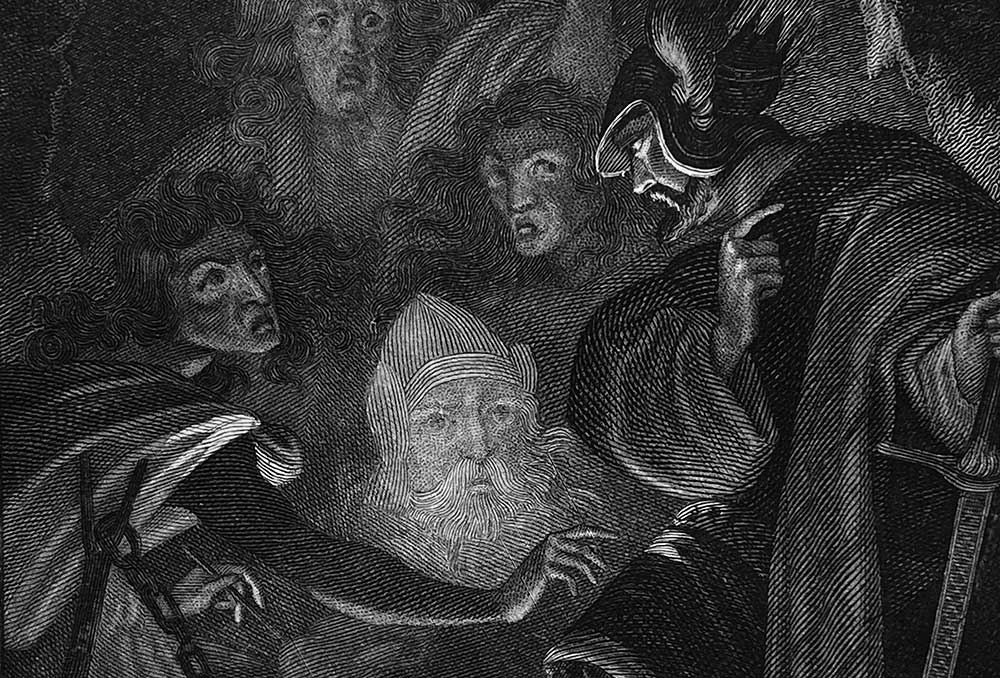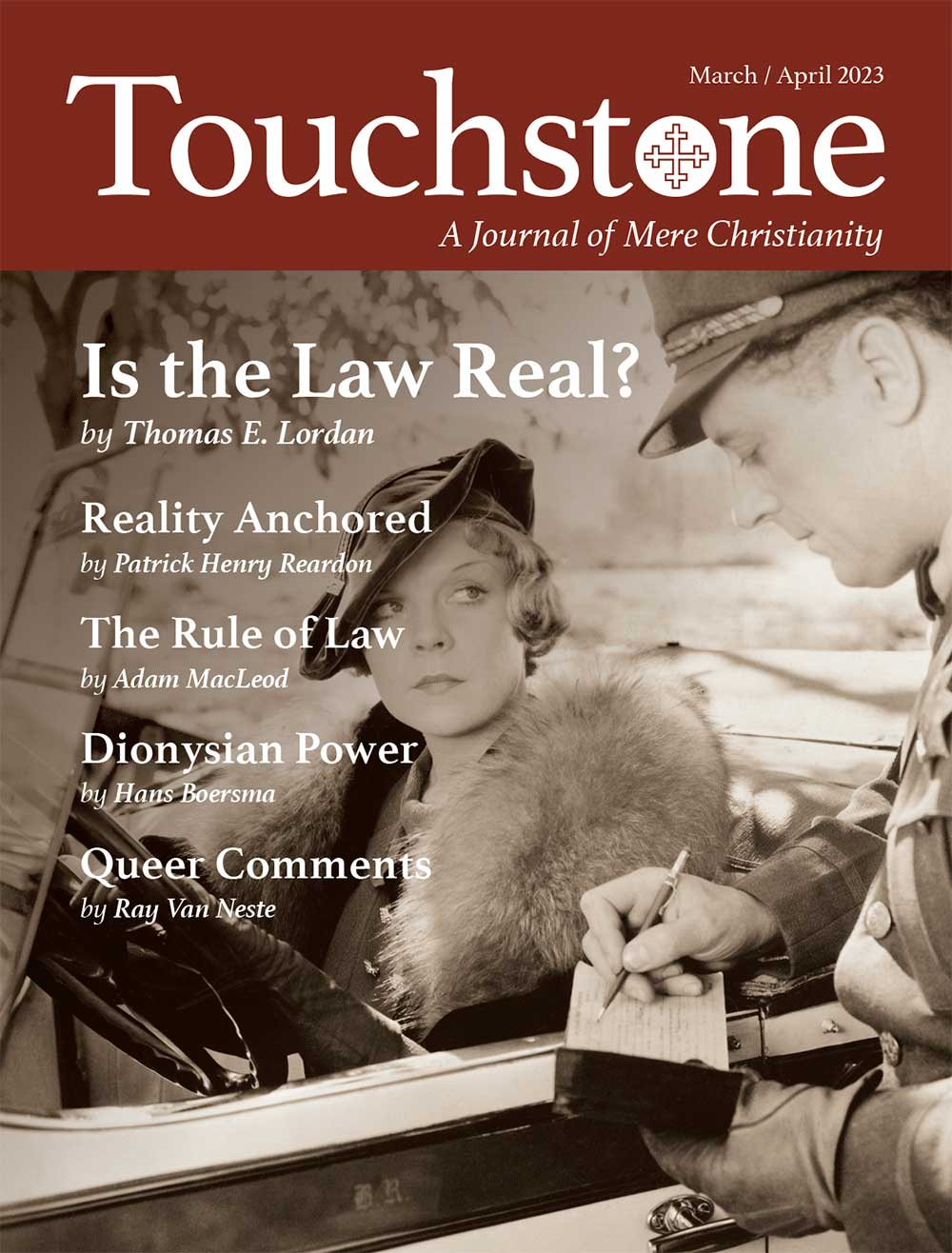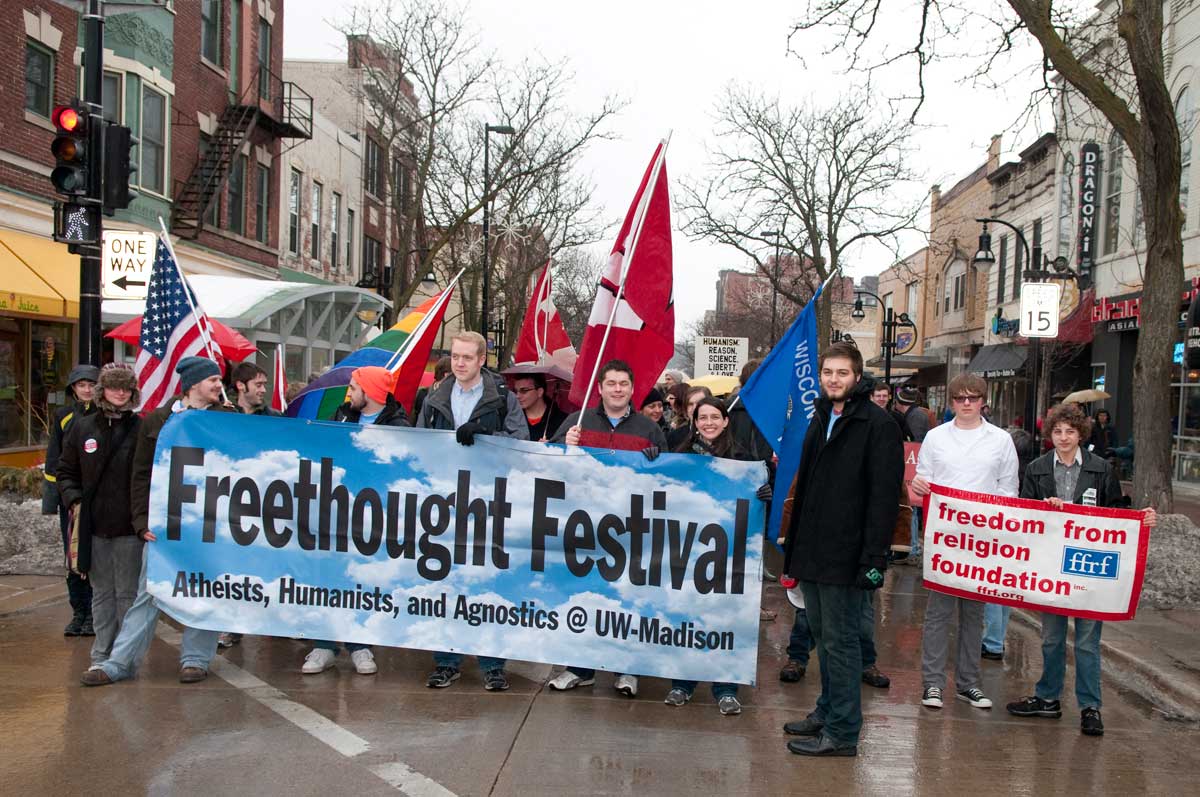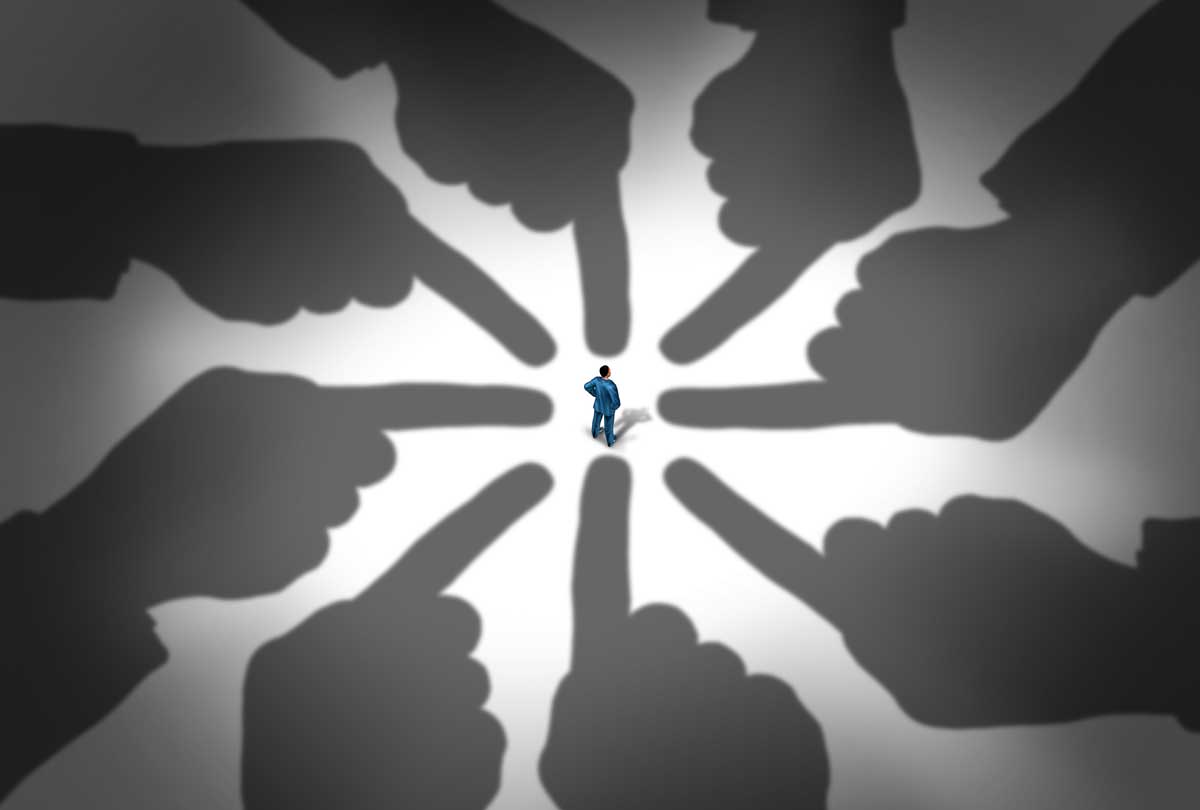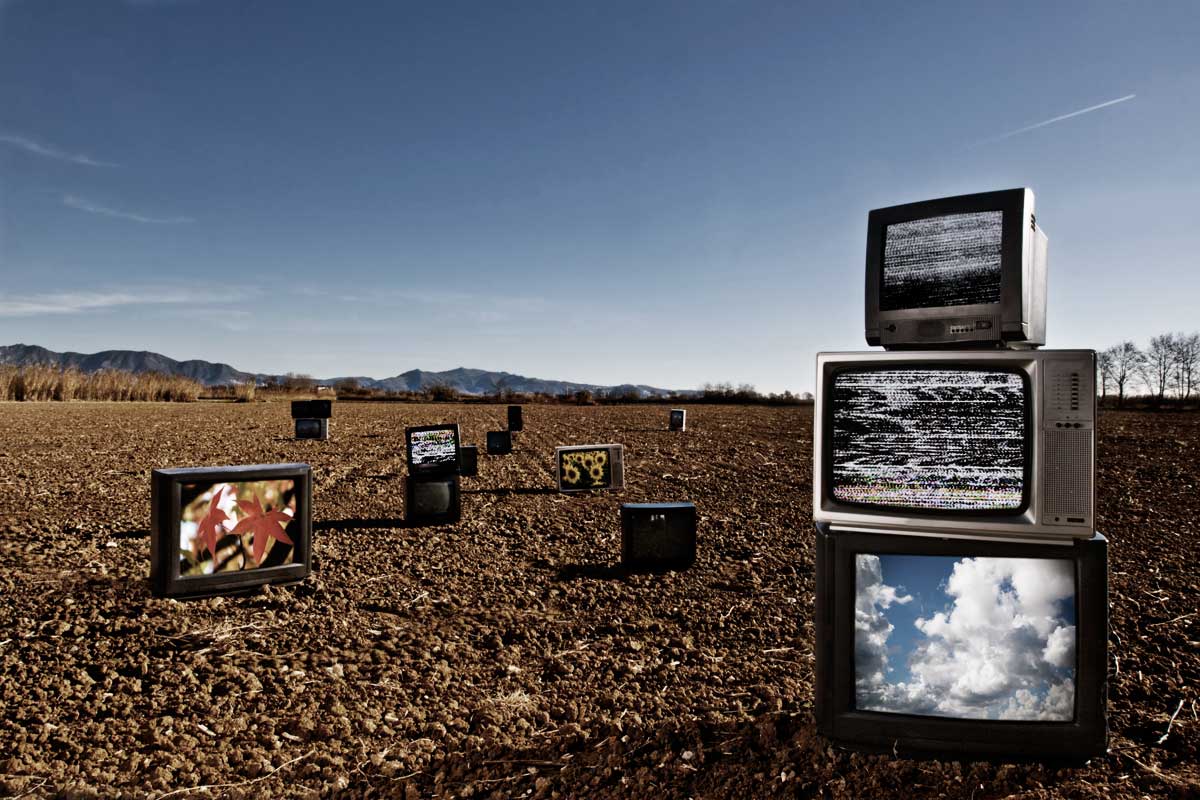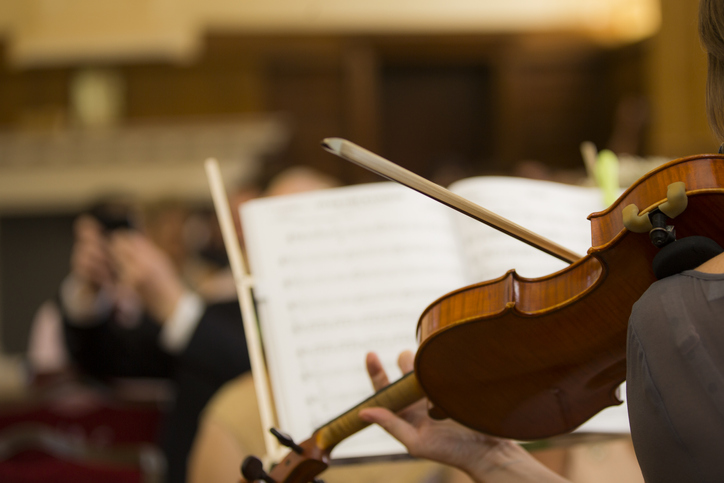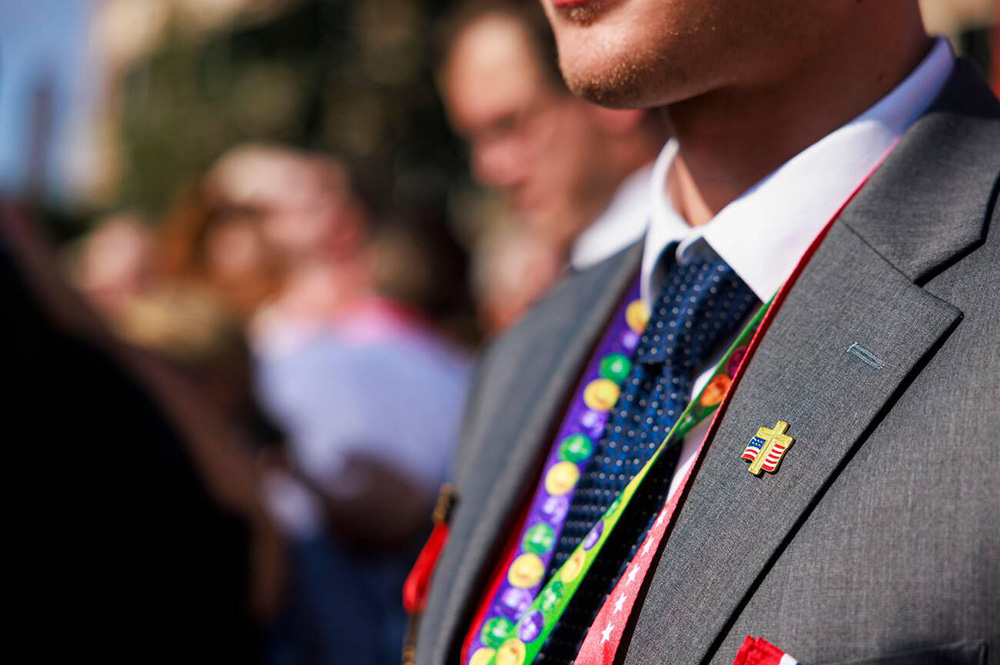Dionysian Power
A Positively Medieval Hierarchy
Hierarchy is in trouble. I am not telling you anything new. We all know our society is strictly egalitarian. A view of reality that is patterned vertically with higher and lower places on the chain of being generally gets dismissed rather quickly. We tend to associate hierarchy with medieval feudalism, obscurantism, unfairness, and especially, oppressive power and violence. As moderns, we celebrate the equal opportunity that a non-stratified, egalitarian society offers, and we take courage from the horizontalizing or flattening of its horizons, for it treats everyone as equals and hence offers protection against arbitrary power from above —or so we think. In short, modernity associates hierarchy with imposition of power and aims to eradicate this evil by replacing hierarchy with equality, vertical stratification with horizontal relationality.
In this essay, I want to investigate the principles that undergird a hierarchical metaphysic. I will do so by turning to the sixth-century Syrian monk Dionysius, in part because he was the first to use the term hierarchy and wrote extensively about its relation to power, and in part because Dionysius thought deeply about hierarchy both in terms of the structures of reality in general and in terms of ecclesial structures. I hope to show that the Dionysian hierarchy, which undergirded church and society in the Middle Ages, did indeed have the functioning of power at its center, but not the kind of power that violently imposes itself upon the disenfranchised and marginalized but the kind that lovingly lifts others into the being of God.
I will also try to turn the tables on modernity by briefly comparing the implications of an egalitarian, nominalist metaphysic with those of a hierarchical, participatory metaphysic. My basic argument is that when power is embedded within a hierarchical, participatory metaphysic, it serves to uplift others —to hierarchize them —into God himself. By contrast, the modern atomizing and mapping of creaturely beings onto a strictly horizontal map requires centralized power structures to manage and control individual beings. Put differently, within a hierarchical view of reality, power serves to lift up rather than to oppress, whereas within an egalitarian view of reality, power naturally oppresses people rather than lift them up.
Fantastical Wickedness
Before turning to Dionysius, I briefly want to turn to Shakespeare’s Macbeth; it, too, teaches us a great deal about power. Macbeth, after all, is motivated primarily by power. Told by three witches that he will be king one day, and incited by his wife, Macbeth takes steps to make the prophecy come true. Rejecting the sacred obligations he has to his kinsman and lord, King Duncan of Scotland, he decides to murder him —a shocking act of rebellion against the social structure of society and, of course, against life itself. This first murder leads to numerous others, first of the two chamberlains whom Macbeth and his wife have framed as the alleged murderers of the king; then also of Banquo, whose son threatens to become a potential challenger to the throne; and finally of the wife and children of Macbeth’s antagonist Macduff.
The power that Macbeth pursues is hardly power as power is meant to be. King Duncan’s son Malcolm reflects on the nature of power in the play’s final act, when he considers his own alleged shortcomings in conversation with Macduff. Malcolm shares with Macduff the characteristics of the graces of a good king:
The king-becoming graces,
As justice, verity, temp’rance, stableness,
Bounty, perseverance, mercy, lowliness,
Devotion, patience, courage, fortitude,
I have no relish of them but abound
In the division of each several crime,
Acting it many ways. Nay, had I power, I should
Pour the sweet milk of concord into hell,
Uproar the universal peace, confound
All unity on earth.
Malcolm seems quite despairing of himself, but the audience knows that, contrary to his words, he is actually a fitting heir to his father’s throne. Regardless of his own suitability to exercise power, Malcolm is right to think the proper handling of power requires outstanding virtues, for in their absence, the king might “pour the sweet milk of concord into hell.”
Hell, of course, is what Macbeth creates both around himself and in himself. As Macduff puts it, “Not in the legions / Of horrid hell can come a devil more damned / In evils to top Macbeth.” As he pursues tyrannous power based in bloodshed, Macbeth ends up with mental torture: “O, full of scorpions is my mind, dear wife!” Tormented by guilt, he can no longer hold it together: “I am in blood / Stepped in so far that, should I wade no more, / Returning were as tedious as go o’er.” First he and then also Lady Macbeth begin to experience hallucinations, as they lose their grip upon reality. Here is Macbeth, first losing a sense of reality:
Is this a dagger which I see before me,
The handle toward my hand? Come, let me clutch thee.
I have thee not, and yet I see thee still.
Art thou not, fatal vision, sensible
To feeling as to sight? Or art thou but
A dagger of the mind, a false creation
Proceeding from the heat-oppressèd brain?
While initially the idea of murdering his king seems “fantastical” to Macbeth, once the wicked deed is done, he turns back to the demonic witches, who anticipate his coming with the chant, “By the pricking of my thumbs, / Something wicked this way comes.” The wicked tyrant consults the three witches, only to be tricked by them about his own future. As we know, the tragedy ends with Lady Macbeth committing suicide and Macbeth himself being killed by Macduff, the nobleman who helps King Duncan’s son Malcolm regain the Scottish throne.
Macbeth’s use of power makes him lose touch with reality, for it is a tyrannous power, not grounded in reality. His oppressive behavior pulls him, as well as his country, down into the abyss of hell. Indeed, as the porter of Macbeth’s Inverness Castle recognizes, the castle has turned into a hellish place: “Knock, knock, knock! Who’s there, i’ th’ name of Beelzebub? . . . Knock, knock! Who’s there, in th’ other devil’s name?”
It is virtuous kings —Duncan, his son Malcolm —whose power uplifts them and the people of Scotland that they serve. Tyrant Macbeth does not spare one thought for his Scottish people. By contrast, Macduff’s groan, “O Scotland, Scotland!”, tells us both where his heart is and what power is meant to do. “O nation miserable, / With an untitled tyrant bloody-sceptered, / When shalt thou see thy wholesome days again?” The difference between the two mindsets could hardly be more obvious. The one exploits power to put down, to oppress —thus lapsing into demonic and hallucinatory fantasies of hell. The other uses power to lift up, to hierarchize —thus guiding his subjects to the harmonious peace of unity on earth.
Hierarchical Power
Let’s turn from Shakespeare to Dionysius, who through much of the Christian tradition was identified with Dionysius the Areopagite mentioned in Acts 17 as being converted through St. Paul’s sermon on Mars Hill. He articulates his theology mainly in four books: The Divine Names (DN), The Mystical Theology (MT), The Celestial Hierarchy (CH), and The Ecclesiastical Hierarchy (EH).
The first two are in some ways markedly different from the last two, as the titles intimate: The Divine Names and The Mystical Theology discuss the question of how it is that we can name God, considering his transcendence, while The Celestial Hierarchy and The Ecclesiastical Hierarchy deal with the divinely ordered structures of angels and of the church. Still, the books are all closely linked. To understand how Dionysius viewed power, we need to look at his discussion of angelic and ecclesial hierarchies against the backdrop of the participatory metaphysic that he outlines in The Divine Names and The Mystical Theology.
Before we ask after the role of power in Dionysius’s hierarchies, we should investigate what he meant by “hierarchy.” He defines it in chapter 3 of The Celestial Hierarchy as “a sacred order (taxis hiera) and knowledge and operation, assimilated, as far as attainable, to the likeness of God, and lifted up (anagomenē) to the illuminations granted to it from God, according to capacity (analoges).” A little further in the same chapter, Dionysius ventures a second attempt at defining the term: “He, then, who mentions hierarchy, denotes a certain altogether sacred arrangement (hieran . . . diakosmēsin), an image of the supremely divine blossoming, ministering the mysteries of its own illumination in hierarchical ranks and understandings” (CH 3.2; 165B).
Hierarchy, for Dionysius, is a sacred order or arrangement. The order contains members with varying degrees of dissimilarity to God. These members of the hierarchy are meant to be lifted up (anagein), each in accordance with the mode of its own being (according to its own capacity or analogia), toward the simple Beauty or Goodness of God, in the process being more and more assimilated to God, whose perfection implies that he has no unlikeness at all. Dionysius, then, repeatedly uses the language of being lifted up (anagein) or, as he also calls it, being hierarchized (hierarcheisthai).
It is crucial to observe that to hierarchize does not mean to control or to rule in tyrannous fashion. Dionysius would abhor the actions of Macbeth. To be sure, hierarchies and hierarchizing have everything to do with order and ranks. But when a hierarchy hierarchizes, this simply means that, in line with their created distinctiveness, the various beings are lifted up, so as to become more like God. This means that the role of the various hierarchies is mystagogical. Dionysius writes his book The Ecclesiastical Hierarchy for “those who have been initiated with the initiation of the sacred mystagogy (mystagōgias), derived from the hierarchical mysteries (mystēriōn)” (EH 1.1; 372A). The role of a mystagogue is to initiate others into certain religious mysteries. For example, in the centuries preceding Dionysius, mystagogical catechesis served to explain to newly baptized Christians the meaning of the mysteries enacted in the liturgy.
Dionysius puts it this way: “Let us view our hierarchy, conformably to ourselves, abounding in the variety of the sensible symbols, by which, in proportion to our capacity, we are conducted, hierarchically (hierarchikōs . . . anagometha) according to our measure, to the uniform deification (theōsin) —God and divine virtue” (EH 1.2; 373B). The aim of every hierarchy is for the members to be lifted up into God —deification. Dionysius’s view of power is reflected, it seems to me, in Malcolm’s description of true kingship: “king-becoming graces, / As justice, verity, temp’rance, stableness, / Bounty, perseverance, mercy, lowliness, / Devotion, patience, courage, fortitude.”
Indeed, on a Dionysian hierarchical understanding, power serves only one purpose: to facilitate the mystagogical return (epistrophē) of creatures to God, from whom they have come by way of procession (proodos). Power serves not to put down or to oppress; it serves the process of returning to God. A telling section in the fifth chapter of The Ecclesiastical Hierarchy discusses the power (dynamis) of the sacraments, the ministers, and the initiates. Sacraments have three powers (dynameis): purification of the uninitiated, illumination of those who are purified, and perfection of those being instructed. Ministers, too, have three powers: purification of the uninitiated through the sacraments; illumination of those purified; and perfection of their understanding. Finally, the initiates themselves have three powers: the power of being purified, of being illuminated, and of perfecting the understanding (EH 5.1.3; 504A–B). In short, power is the ability to guide or be guided through the process of purification, illumination, and perfection.
True, Dionysius’s hierarchies offer a dazzling outline of heavenly and ecclesial structures: angels are divided into three hierarchical groupings of three: seraphim, cherubim, and thrones; dominions, powers, and authorities; and finally, principalities, archangels, and angels. The church is structured by way of hierarch, priest, and deacon; monks, laity, and uninitiated; and, within that last group, catechumens, penitents, and demon-possessed. The overall structure looks something like this:
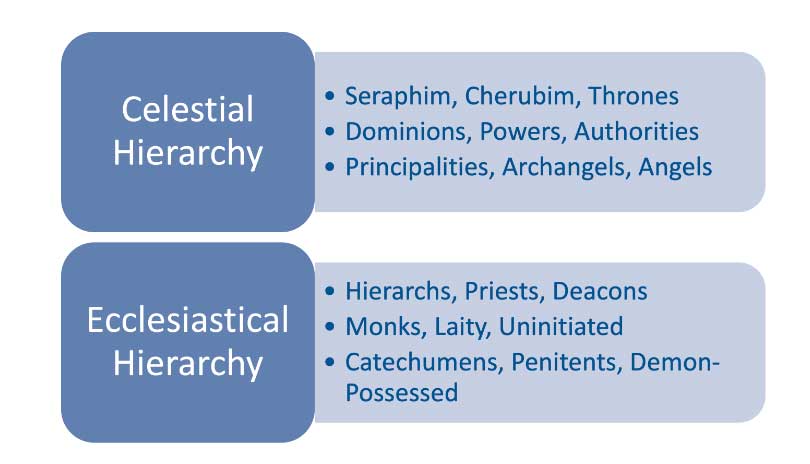
Diagram 1: Celestial & Ecclesiastical Hierarchies
To a modern mindset, what is perhaps most troubling about this structure is its seemingly static character. We insist on equal opportunity; we want a chance to advance. Dionysius’s categories seem static and not to allow for this kind of upward mobility. The criticism is partly on-target: once an archangel always an archangel; archangels do not become seraphim. The heavenly hierarchy does not change. On the other hand, within the ecclesial hierarchy some degree of movement is possible. Deacons can become priests and hierarchs. Catechumens have the intention of advancing to the rank of the laity, and some of them may end up becoming deacons or priests. Some, mostly limited, upward mobility is possible, at least within the ecclesial hierarchy.
Dionysius, however, does not even discuss such upward mobility. What matters for him is to move up into God. To give but one example, for Dionysius, if I am a priest, my aim is not to become a bishop. That might, for a variety of reasons, be a terrifying prospect. The role of the priest is to prepare catechumens for the celebration of the Eucharist, to give them a proper understanding of it, so they may properly contemplate what they are about to celebrate (EH 5.1.6; 505D–508A). Precisely by knowing our place within the hierarchy, by accepting and inhabiting it —the aspects that most bother moderns for their static implications —we unleash the dynamism inherent within the hierarchy.
God Beyond Being
For Dionysius, it was not enough to speak of God in terms of being (ousia or esse). Influenced as he was by the Neoplatonic philosophers Plotinus and Proclus, Dionysius foregrounded negative or apophatic language about God. Time and again, the Areopagite speaks of God as Beyond Being (hyperousios). He freely uses terms such as the One (to hen), Goodness (tagathon), and Beauty (to kallos) to refer to this God Beyond Being. But even these exalted Plotinian terms, which reach beyond the realm of being, do not adequately capture who God is. We use these names, not because we thereby capture God; rather, we speak of God as One to indicate that, in a unique manner, he is all things and is the cause of all things, without losing his own oneness (DN 13.2; 977C). And we speak of him as Goodness and as Beauty to make clear that he is the cause of every good and beautiful thing.
“This,” writes Dionysius, “the One Good and Beautiful, is uniquely cause of all the many things beautiful and good” (DN 4.7; 740B). But because God is actually beyond any of these concepts, we have to negate even these concepts of One, Goodness, and Beauty or, rather, move beyond them. The hidden God is Beyond Oneness (DN 13.3; 981A) —at least, the way we commonly understand oneness. Similarly, he is Beyond Good (DN 4.2; 696C–D). And he is Beyond Beauty (DN 4.7; 701D).
It should be obvious that, for Dionysius, the language of being or esse will not do to describe God. The philosophical tradition, beginning already with Parmenides, taught Dionysius that being implies intelligibility. To say that God is Being would mean, for Dionysius, that our concepts can encapsulate God. Such a God could not possibly be transcendent. Dionysius, therefore, relegates Being to the realm of Intellect (nous), which is a step down from the utterly unknowable and ineffable deity. For Dionysius, when we move into the darkness beyond Intellect, we end up with complete speechlessness and unknowing (MT 3; 1033C; cf. MT 5; 1045D–1048B).
Nothing positive can be said about the Beyond-Being cause of all things. We must negate even our negative statements about God. Because he is Beyond Being, creatures cannot participate in him. Creatures participate in the Being of God, but not in God as Beyond Being (hyperousios). The upshot is that to Dionysius, God is radically transcendent, and —with respect to God as hyperousios —we simply do not participate in him.
God Beyond Hierarchy
This unprecedented emphasis on God’s transcendence means he cannot possibly be part of any hierarchy. He does not even occupy a place at the very top. Hierarchies have to do with being, whereas the Dionysian God Beyond Being transcends all this. Let me illustrate the importance of this claim by depicting two possible approaches to hierarchy and participation.
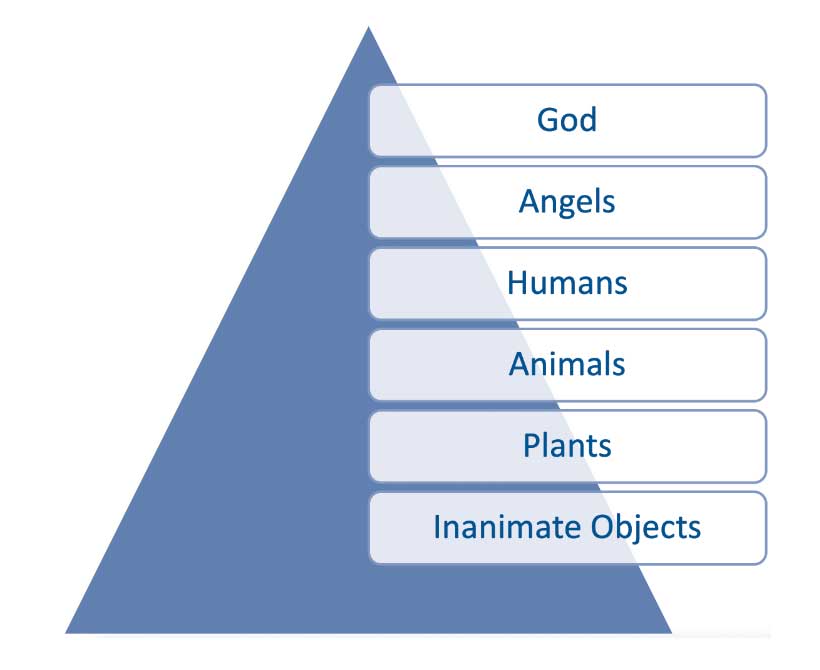
Diagram 2: God Within Hierarchy
This diagram treats God as the highest level of a hierarchy. This does two things. First, it turns this God into one being among many beings. After all, here God is depicted as one item among many. The others may be much lower than he, but no matter where they are located, they, together with God, are so many links within the one chain of being.
Dionysius emphatically rejects the notion that God would be a being, one among many, for it would mean that within the chain of being, God and his creatures compete, as it were, for space. It would mean that whenever God exercises power in a certain activity, he exercises this power instead of creatures doing so. And, of course, the obverse would be true, as well: when creatures exercise their power in a certain activity, they thereby foreclose the exercise of divine power. In other words, God’s relationship with other beings would be a zero-sum game: what God does, other beings cannot do, and what they do, God cannot do. Such competition would endanger the radical alterity or transcendence of God, and Dionysius avoids this by treating God and creatures as being in a non-competitive relationship.
A non-competitive relationship gives genuine power to creatures. Human beings can cooperate with God in the process of lifting up or hierarchizing (CH 3.2; 3.165B). As God enlightens creatures, each in its own way imitates God according to its creaturely capacity (analogia). God’s activity (energeia) is at work in them, so that God does what they do, and they do what God does. The creature becomes God’s fellow worker (synergos) (cf. 1 Cor. 3:9; 1 Thess. 3:2). “The essence of hierarchy,” explains Eric Perl,
is the sacramental principle of co-operation, or synergy. This means not merely that the creature and God “work together” as though the creature were another being, additional to God, or that the creature’s operation is merely by courtesy attributed to God, but that the activity of the creature, by participation, truly is that of God. (“Hierarchy and Participation in Dionysius the Areopagite and Greek Neoplatonism,” American Catholic Philosophical Quarterly 68 [1994], 15–30, at 23)
For Dionysius, synergy is possible because God is both transcendent and immanent at the same time: he is not one item within the hierarchy.
Treating God as one item within the hierarchy —at the very top, to be sure —has an additional adverse effect: God would be present directly only to the level immediately below him. Perhaps we might think here of the seraphim, cherubim, and thrones, God’s highest creatures. They might participate directly in God, since they would be located immediately below him, but human beings would not; nor would elephants, let alone oak trees or rocks.
On a Dionysian understanding, no matter where a creature is located within the overall hierarchical scheme, and no matter the generous mediation offered by higher to lower levels (say, that of a priest to a catechumen), creatures nonetheless always directly participate in God, while God is directly present to them. We may perhaps picture the relationship as follows:
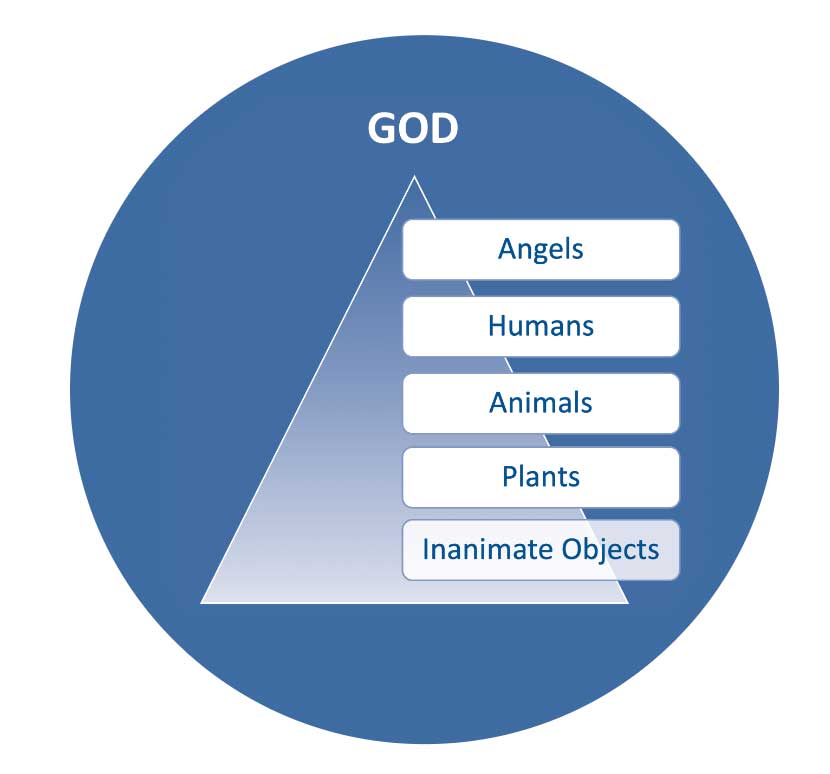
Diagram 3: God Beyond Hierarchy
We see here that God is utterly transcendent: he is not part of the hierarchy but transcends it. He is not one being among many. That is why the diagram places God beyond the hierarchical triangle. To be sure, God’s transcendence implies that he is sovereign. God is “higher” than creatures. Scripture often does use hierarchical terminology to articulate this transcendence, employing metaphors for God such as king or father. Dionysius, therefore, speaks of God’s power “lifting up” or “hierarchizing” creatures. Anagogical discourse —language of ascending to God —intimates that God is “higher” than creatures. But such vertical discourse (along with hierarchical metaphors) does not adequately capture or comprehend God. While creatures are bounded or limited (indicated by the rectangular boxes), God is unbounded or infinite (something no diagram can adequately depict). God is not part of the created hierarchy.
Because God is not circumscribed in any way and is not one particular being within the created hierarchy, he is omnipresent. He is present to every creature, and every creature participates in him —which the diagram depicts with the circle that surrounds each creature. Each creature within the hierarchy participates in the Being of God, though the different shades within the triangle indicate varying degrees of participation. The God Beyond Being is not only radically transcendent, but he is also —precisely because of his transcendence —immanent to the entire created order, every level of the hierarchy. Eric Perl puts it this way: “The One immediately produces and is present to the entire sequence of hierarchical mediation. As the productive power of the whole, it is present throughout the whole” (Theophany, 77). For Dionysius, divine transcendence and immanence are in no way opposed to each other.
The reason Dionysius manages to combine divine transcendence and immanence is that he doesn’t treat God as one of many beings. God himself is Beyond Being (hyperousios), so that he does not, in any way, need to either crowd out or make room for the beings that proceed from him. Perl writes:
God is not a being, the first link in the great chain, standing at the summit of the cosmic hierarchy. If he were, he would be a determinate being, a member of the cosmos, one existing thing among other existing things. Rather, as the determinate being of all things, himself beyond being, God is at once transcendent and immanent, beyond the entire hierarchy of creatures and permeating the whole from top to bottom. (“Hierarchy and Participation,” 18)
God, according to Dionysius, permeates the whole without being any one of its constituent elements.
Modern Hierarchies
The world is hierarchically structured, inescapably so. Modernity has lost its faith in hierarchy because it has lost the notion of participation. As a result, we insist on strictly egalitarian social arrangements. It is not, however, as though we no longer have any hierarchies. It is just that they are socially constructed and are strictly functional. My dean still tells me when to teach a course, army captains still issue military orders to their lieutenants, and —to give a more revolting example —health officials still demand vaccinations as a prerequisite for participation in public life.
All of these, however, are functional rather than ontological hierarchies. They are the result of various social contracts rather than being grounded in the nature of things. We need these social contracts because life together would be impossible without power or hierarchy. Power, in modernity, is the result of the way in which we construct relationships. In other words, the modern social web, including its power relations, is grounded in a nominalist (constructivist) understanding of reality rather than in a realist (participatory) metaphysic.
Let me offer one final diagram, which approximates the way moderns view power —whether in church or more broadly in society:
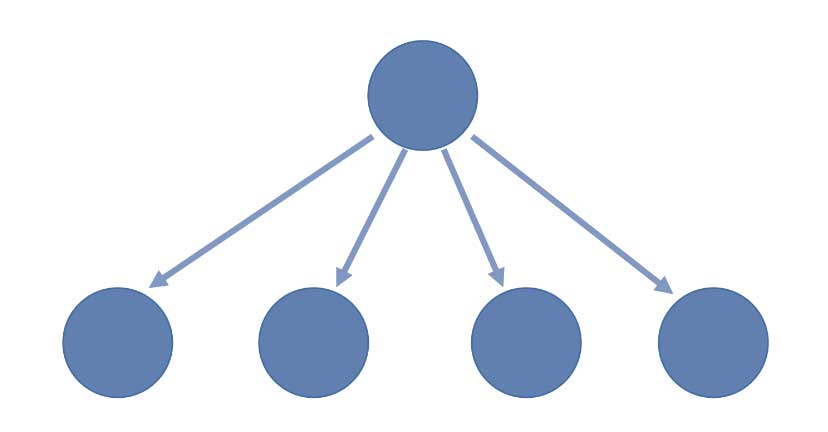
Diagram 4: Modern Power
The face of power, in modern settings, purports to be much gentler than that in ancient and medieval societies. Earlier societies, so we tend to think, were brutal in their exercise of power, whereas in our enlightened world, we recognize the equality of all, so that we give power to people or institutions by assigning particular functions to them.
The reality, however, is much different. The structure in this final diagram is strictly this-worldly. The top circle is Jeff Bezos or Bill Gates or Justin Trudeau —not God. We have, at best, bracketed God and removed him from the picture. We no longer need God for power to function well, or so we think. In other words, we have a thoroughly non-participatory, nominalist universe, which for its functioning depends upon the way we structure our power relationships.
The result is a voluntarist arrangement —voluntarism being a word derived from the Latin voluntas —will. The Hobbesian and Lockean social contract —articulated in detail in Hobbes’s Leviathan (1651) and Locke’s Two Treatises of Government (1689) —depends upon the human will, which (purportedly) has agreed to yield certain powers to those in control. But the increasing power of companies such as Google, Facebook, and Twitter makes more and more evident that large masses of people are virtually powerless in the face of powers that impose, exclude, and silence at will. It is often the voluntas of one or a few individuals at the top that determines the outcome of our social debates. Perhaps we already live in Inverness Castle, and the porter’s question should be ours as well: “Knock, knock, knock! Who’s there, i’ th’ name of Beelzebub?”
Charles V, Holy Roman Emperor at the time of the Reformation, would have been green with envy at the power at Bill Gates’s disposal. The reason for the emperor’s impotence should be obvious: Charles V functioned within a hierarchical feudal system with mediating powers, such as monarchs, nobles, knights, and peasants, as well as a variety of often pesky ecclesial figures —monks, priests, bishops, popes. These mediating and overlapping powers stood in the way of any emperor who would attempt arbitrarily or unilaterally to impose his will.
Voluntarism —as depicted in the last diagram —knows no mediating powers. And where they do continue to exist, they have largely been robbed of genuine influence. An egalitarian society is one that, in principle, has opened itself up to totalitarian rule —something that today only those willfully blind are still not able to see. With “sainted King Duncan” gone, Macbeth turns power into tyranny. Something wicked this way comes.
But the most important difference between power in a traditional hierarchical system and power in egalitarian societies does not concern the question of where power is situated —whether throughout the hierarchies (including their mediating people and institutions) or only at the top (particularly among global elites). Sure, that is significant, but the greatest difference has to do with what we understand power to be.
Egalitarians construe power as a means of control. Power is a functional thing, after all; it is something we give to people who we think will get the job done. The result is that we link power with control, whether subtle or harsh. For Dionysius, and for the Christian tradition in his wake, power is an ontological thing; it is something rooted in the nature of reality. As a result, for Dionysius, power is mystagogical in character, facilitating the return of created beings to the Being of God. Modern egalitarians use power to oppress and put down; Dionysian mystics use it to hierarchize and lift up.
True, power has been misused within traditional hierarchies, while modern egalitarian structures witness at times shining examples of selfless service. How come? Sinful behavior negatively affects even the best of structures, while the image of God continues to shine no matter how confused and messed-up our structures become. Counterexamples are hardly surprising. Nonetheless, Christian hierarchies lift us up to heaven while modern hierarchies bring us down to hell. This truth is nothing new to those who have read and compared the founding documents of the Christian and the modern, liberal traditions.
Hans Boersma is the Saint Benedict Servants of Christ Professor in Ascetical Theology at Nashotah House Theological Seminary.
subscription options
Order
Print/Online Subscription

Get six issues (one year) of Touchstone PLUS full online access including pdf downloads for only $39.95. That's only $3.34 per month!
Order
Online Only
Subscription

Get a one-year full-access subscription to the Touchstone online archives for only $19.95. That's only $1.66 per month!
bulk subscriptions
Order Touchstone subscriptions in bulk and save $10 per sub! Each subscription includes 6 issues of Touchstone plus full online access to touchstonemag.com—including archives, videos, and pdf downloads of recent issues for only $29.95 each! Great for churches or study groups.
Transactions will be processed on a secure server.
more on culture from the online archives
more from the online archives
calling all readers
Please Donate
"There are magazines worth reading but few worth saving . . . Touchstone is just such a magazine."
—Alice von Hildebrand
"Here we do not concede one square millimeter of territory to falsehood, folly, contemporary sentimentality, or fashion. We speak the truth, and let God be our judge. . . . Touchstone is the one committedly Christian conservative journal."
—Anthony Esolen, Touchstone senior editor





